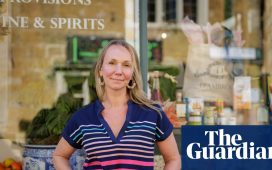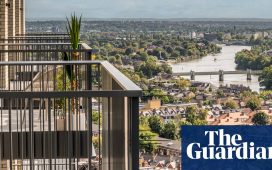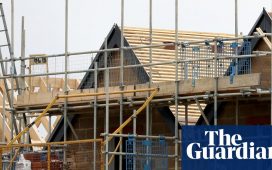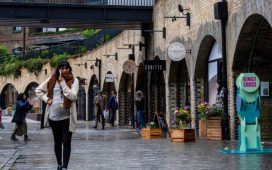Unlock the Editor’s Digest for free
Roula Khalaf, Editor of the FT, selects her favourite stories in this weekly newsletter.
Seabirds screeching overhead and sun bouncing off his pristine white kandura, Ali Sajwani surveys his dominion from behind mirrored sunglasses. The property scion and billionaire’s son, 33, has paid over Drh500mn — more than $130mn — for this pair of empty islands lying off the coast of Dubai. The land is younger than he is.
Created by state-run developer Nakheel when Sajwani was around 12, this peculiar neighbourhood is known as the World Islands. Hover above it and the artificial archipelago would resemble a blotchy world map — one that is largely uninhabited. Dreamt and dredged up during Dubai’s first property boom in the mid-2000s, the World Islands fell victim to the crash following the 2008 global financial crisis.
But now, with luxury property values in Dubai skyrocketing, Sajwani and others are betting that the World Islands can be resuscitated.
Last year, 431 homes priced at $10mn or more were sold in Dubai, collectively worth $7.6bn. That was more than any other city in the world, according to property consultancy Knight Frank.
The trend has brought fresh allegations of Dubai’s open economy and property market being used to wash the proceeds of international criminality — a charge that Emirati economists say is unfair, and downplays the role of traditional laundromats such as London and Switzerland.
Why does Sajwani think Dubai has become a magnet for the mega rich? The self-described adrenaline junkie, whose father Hussain founded Dubai-based developer Damac Properties, cites factors such as security, governance and investor friendliness (plus, there is no personal income tax).
“Also it helps in a big way [that] the rest of the world is sort of falling apart,” Sajwani said. “We don’t think Europe is going to come out of this . . . If you look at all the people moving here, they’re the wealthiest people from Europe.”
“People don’t feel safe any more,” he continued, citing concerns about wearing an expensive watch in cities from London to Geneva.
Azure water laps the shore as Sajwani gazes out to a palm-fronded enclave where Dubai’s royal family has a palace. Conservationists worry about the artificial islands’ impact on marine life, but he says local authorities are enforcing tough environmental standards.
Dubai’s property prices have soared, partly thanks to the war in Ukraine, which propelled many Russians here, but also because of the pandemic. Able to reopen faster than many other cities, the Middle East’s trade and tourist hub attracted new visitors, including “very wealthy people who summer in the south of France and winter in the Swiss Alps, and Dubai was never on their radar”, according to Sajwani.
The businessman, who is also building a resort in the Maldives, is not the first to try to make the concept work. The World Island called Lebanon was the first to offer a beach bar and sun loungers. The upmarket Anantara resort opened on Argentina in late 2021. While curious holidaymakers do visit, some projects are a little threadbare. Take the Heart of Europe islands, the brainchild of Austrian developer Josef Kleindienst, still spiked with cranes despite construction starting a decade ago.
Sajwani decided to buy the São Paulo and Uruguay World Islands as the property market heated up in late 2022 and early 2023. He then hired and fired two architects before finding one who designed 24 villas for the island, each with a dock. Residents are likely to spend winters here, Sajwani said. They will have to commute by boat. Meanwhile, the island has no infrastructure at all — some solar panels will be installed but diesel generators will provide most of the electricity.
That hasn’t put off buyers. All 24 villas — priced between Drh50mn ($14mn) and Drh125mn ($34mn) — are spoken for, according to Sajwani. The buyers include Europeans, Russians and Indians, he says.
Sajwani’s islands have been redubbed Amali — a portmanteau of Ali and his sister Amira’s names, the word also means “my hope” in Arabic.
“The World Islands was this sort of forgotten, unloved child,” Sajwani said. Renaming them was about “prov[ing] everyone wrong”.










